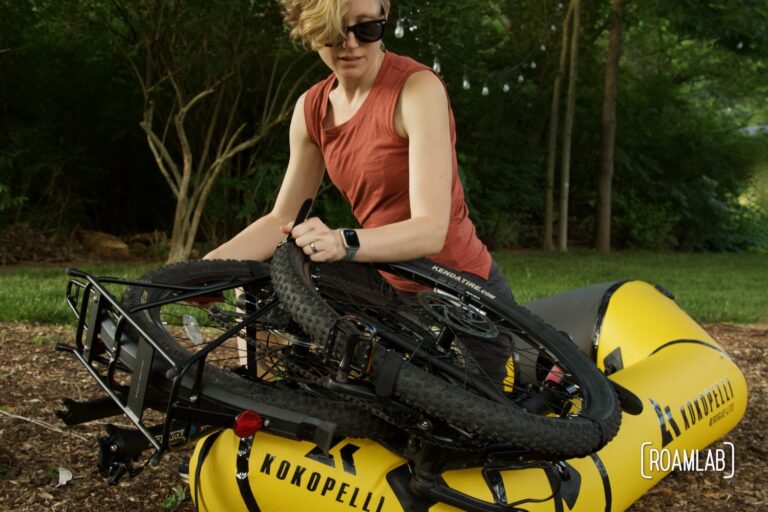As if to underscore that these missile bases were truly in the middle of nowhere, a herd of cows and calves graze by the parking lot of the Minuteman Missile National Historic Site Delta-09. Not much has changed here from the 1960s when the silos were still in operation.
Perhaps the biggest change is that the silos are publicly accessible. Should you choose to pull off on exit 116 on the I-90, the chain link and barbed wire fence is propped open for any visitor. The “shoot to kill” order is no longer in effect. Indeed, the glass cover makes the Minuteman missile not only visible to tourists, but Russian satellites monitoring the sustained decommissioning if these nuclear age missiles.
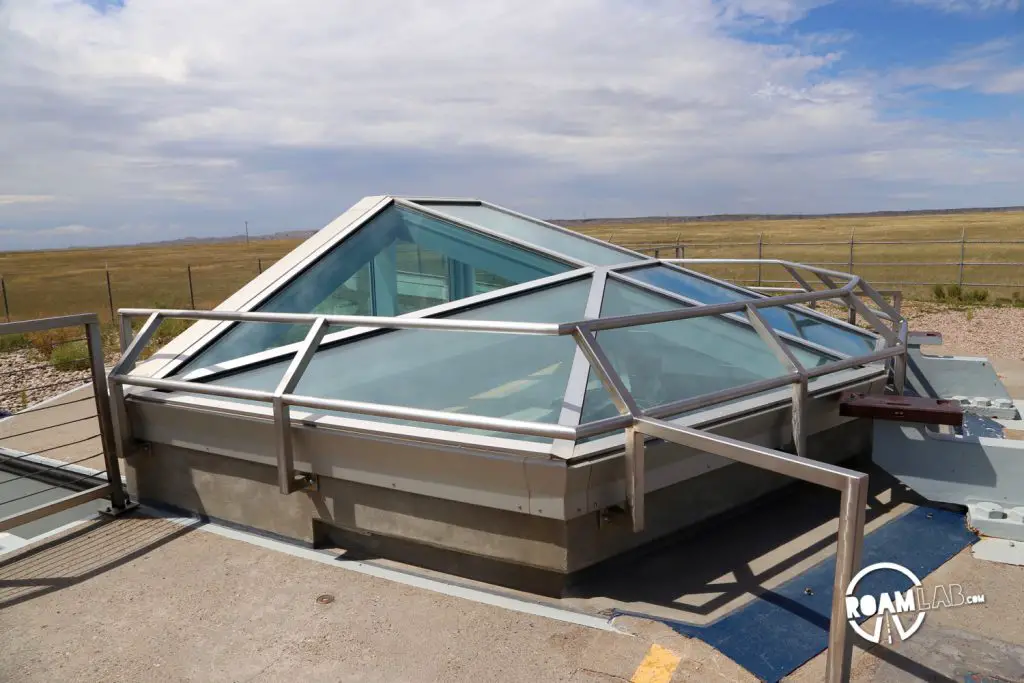
These are relics of the Cold War. Developed in the 1950s, these intercontinental ballistic missiles (ICMB) could be remotely deployed to travel over the North Pole and decimate a Soviet target with a 1.2 megaton warhead in 30 minutes. Could was the point. No Minutemen were launched in an act of war but everyone knew the devastating potential of these nuclear weapons and the inevitable retaliation that would destroy all life on the planet. Mutually assured destruction was a new but ever present term.
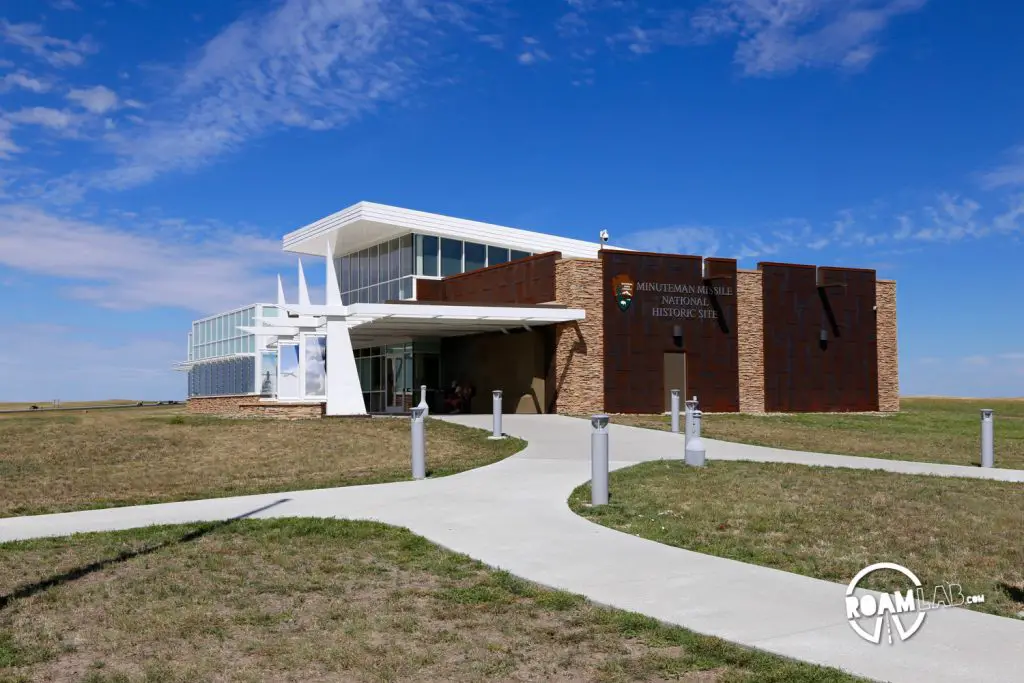
Visitor Center
The museum further east on I-90 not only addressed the cataclysmic power of these weapons but how their very existence permeated everyday life. Children’s cartoons assured toddlers that ducking and covering in a ditch could save them from the nuclear blast that might be coming any day. New infrastructure was introduced that not only advanced military land travel but connected a nation. And mushroom cloud cakes were a thing. And behind high security doors, the public had no idea how close the end really did come.
“Duck & Cover” (1951)
Cold War era nuclear blast preparedness video designed to inform children how to respond in the case of a nuclear attack. What is presented as a PSA in the 50s, in a modern lens appears as a ploy to reassure American children that there was a way to survive the utter devastation that would inevitably follow such a nuclear strike. The happy-go-lucky animation paired with upbeat music becomes macabre when considering the actual subject matter addressed.
Dwight D. Eisenhower: Leader of the Free(way) World
As a denizen of the highway, the Cold War role of the freeway system is particularly of interest. President Dwight D. Eisenhower had been impressed by a network of high speed roads that efficiently connected Germany known as the Reichsautobahnen. The Federal-Aid Highway Act of 1956 initiated and funded a 41,000-mile “National System of Interstate and Defense Highways.” The freeways would not only alleviate traffic, strengthen interstate trade, and improve safety. The freeways were considered critical corridors for emergency transit for both military and civilian purposes. They would allow speedy evacuation of target cities, access to bunkers, and transporting weapons and troops in case of a nuclear attack. Fortunately, the feared attack did not occur, but many of the highways that we traverse today came out of this project.
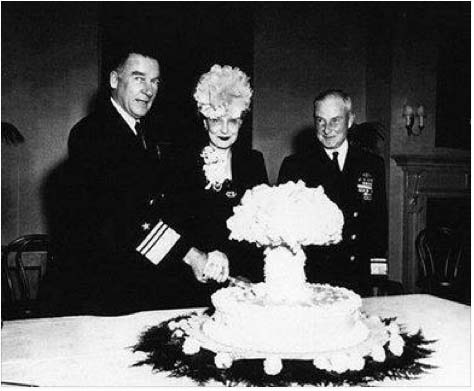
Atomic Cake
Vice Admiral William H.P. Blandy, commader in charge of the task force behind the Bikini Atol tests, poses with his wife and Rear Admiral Frank J. Lowry cutting a cake in the shape of a mushroom cloud. The celebratory atomospher at this party did not extend to the larger public when pictures were published in the Washington Post.
Too Close For Comfort
In a little corner of the museum is a small display addressing the big near misses that could have ended the world in fire. Crossed wires, ignored orders, and cooler heads prevailed. But they easily could not have.
On October 27, 1962, during the height of the Cuban Missile Crisis, a US Destroyer dropped depth charges on soviet subs off Cuba. The intent was to force the subs to surface. What the US officers were not aware of was the these subs were outfitted with 15-kiloton nuclear weapons. It was everyone’s lucky day that protocol required all three senior soviet officers to agree to deploy the weapons in retaliation. They didn’t.
On September 26th, 1983, sunlight reflecting off of high altitude clouds triggered a Soviet satellite detection system. To Soviet Lt. Col. Stanislav Petrov, the misinterpreted reflection appeared to be five ICBMs. If he reported the ICBMs, Soviet leaders would have likely launched their own nuclear missiles in retaliation before the truth could be uncovered. Petrov thought it was unlikely that the US would only deploy five ICBMs if they truly were attacking the USSR. He was right. In 2006, his decision not to act was honored by the UN.
The US military had its own near misses. On November 9, 1979 an attack by Soviet submarine-launched ballistic missiles was detected by NORAD followed by a ICBM a few minutes later. Government and military began preparing for the worst case scenario. Fortunately, no one got too trigger happy before it could be discovered that a technician had inserted a training tape into the NORAD computers. It was all a simulation.
On January 5, 1995, President Boris Yeltsin had opened the “nuclear suitcase” and was beginning to enter the launch codes. A missile had been detected on its way to Moscow. Unlike other false alarms, there was a missile in play, but it happened to be a Norwegian research rocket launched to study the Northern Lights.
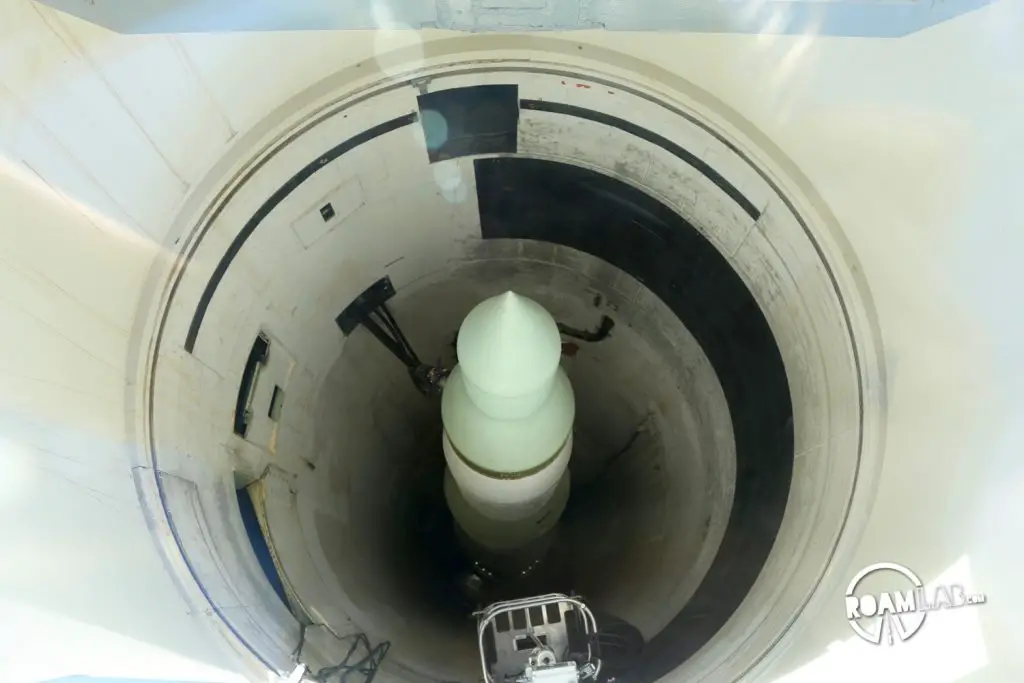
Peace Broke Out
These sites were decommissioned as part of the 1991 Strategic Arms Reduction Treaty. The U. S. Air Force collaborated with National Park Service to preserve a site representative of the Cold War arms race. Delta-01 Launch Control Facility and Delta-09 Launch Facility were the most typical and best preserved examples of the 1961 Minuteman missile configuration and conveniently located along the I-90.
“Together we must learn how to compose differences, not with arms, but with intellect and decent purpose.”
– Dwight D. Eisenhower





